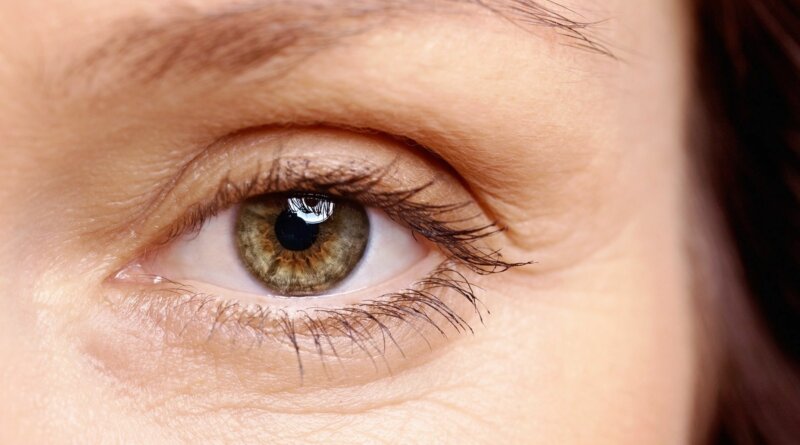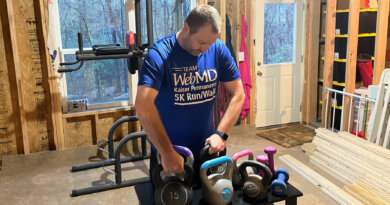Vision Rehab Helps People With Low Vision Navigate the World
March 3, 2022 — When Alabama-based cardiologist Joseph Fontenot, MD, was 50 years old, he noticed that the picture on the screen at the movie theater didn’t seem crisp. “I guess they don’t make movies as well as they used to,” he thought.
He developed other visual problems, so he consulted eye doctors. He was diagnosed with angioid streaking of the retina, a condition similar to macular degeneration, for which there was no treatment at the time.
“I was told my vision might get worse, which it definitely did, and relatively quickly,” says Fontenot. Within a couple of months, he could no longer drive or read anything other than large print.
He learned about vision rehabilitation services from another patient with his condition that one of his doctors put him in touch with.
With the help of skills acquired through vision rehabilitation, Fontenot was able to keep practicing as a cardiologist, using an electronic magnifier that helped him read patients’ test results and charts. His vision continued to worsen, but he learned new ways to compensate.
Soon, other doctors in Fontenot’s group practice began referring their patients with impaired vision to him for help and information. “I began to realize that the majority of people with this problem have no idea what’s available or what to do,” he says. He decided to become certified as a vision rehabilitation therapist and to open up a practice. Today, Fontenot is the chair of the American Academy of Ophthalmology’s Vision Rehabilitation Committee.
What Is Low Vision?
Doctors call visual impairment that is chronic and can’t be corrected by medication, surgery, or prescribing different glasses “low vision,” explains John D. Shepherd, MD, a clinical spokesperson for the American Academy of Ophthalmology and an assistant professor at the University of Nebraska. The most common causes of low vision in the United States are glaucoma, macular degeneration, and diabetic retinopathy. Treatments may stop further vision loss but won’t restore vision that people have already lost.
Most eye doctors are focused on providing treatment or medication for the disease, Shepherd says. Low vision specialists address the visual impairments the disease causes. “It’s a whole different paradigm and a whole different way to approach the situation.”
Visual impairments can be wide-ranging, Shepherd says. “A person may have trouble reading, writing a letter, working on devices such as the computer or smartphone, paying bills, functioning independently in the kitchen, or engaging in favorite hobbies or other activities that require our eyes.”
He advises patients to ask their eye doctors whether their condition is treatable and if their vision can be fixed. “If not, then you will need help dealing with the impairment, and that’s where low vision specialists and vision rehabilitation enter the picture.”
What Does Vision Rehabilitation Offer?
Low vision specialists can address three major areas, Shepherd says.
One is skills training for vision. Someone with macular degeneration, for example, can’t see details of what’s in front of them, but they still have vision. “Skills training can help these individuals understand how to stop relying on the ‘bad’ areas of the eye and bring the better areas onto what they want to see,” he says.
Vision specialists also offer guidance about changing your environment, such as taking advantage of lighting and contrast to make it easier to perform tasks. Low vision specialists also can recommend a wide array of devices that can enhance someone’s vision and enable them to accomplish a given activity better.
Low vision rehabilitation starts with an evaluation of the person’s specific needs: What is the person’s area of impairment? What is the person struggling to do? Based on the evaluation, the therapist will know what to recommend and how to work with the patient. In fact, says Shepherd, “I can’t think of an activity in which there aren’t ways to help people [with low vision] to participate in it.”
‘Best-Kept Secret’
Steven Kelley, a Vermont-based vision rehabilitation therapist, says he regards vision rehabilitation as “the best-kept secret,” not only among patients but even among health care professionals.
One reason: “They don’t know that this type of service exists,” he says. Also, vision rehabilitation therapists are often seen as providing social services rather than medical services, and vision rehabilitation is not covered by most insurance.
But lack of insurance coverage doesn’t mean that vision rehabilitation is expensive or must be paid out of pocket. Usually, the cost is covered by state agencies, Kelley says, at little expense to the patient.
Vision rehabilitation therapists often work in agencies that provide services to people who are blind, which can be “intimidating” for people because “many elders don’t see themselves as ‘blind’ if they have recent vision loss,” Kelley says. But that’s based on a misunderstanding, he says, since vision rehabilitation therapists provide services for people at any point in the low vision spectrum, not only people close to blindness.
Getting services as soon as possible is important, says Kelley, who himself has low vision. He began having a hard time with his vision 20 years ago, when he worked in website design. He was diagnosed with myopic degeneration and ended up losing his job before he was able “to figure out what was going on and what to do about it.”
He eventually discovered the field of vision rehabilitation therapy. He got more involved and received training and certification so that he could help others. Today, he has his own vision rehabilitation practice.
Another reason to seek out vision rehabilitation as soon as possible is that some research suggests that people with new vision loss who don’t receive services within the first 3 months can become depressed because their life functions, like reading and driving, have become curtailed. “Then, you have clinical depression on top of the vision loss, which makes vision rehabilitation more challenging,” says Kelley.
Where to Get Help
Fortunately, “there’s plenty of help available — you just need to learn where to look for the resources that are out there,” Fontenot says.
National Library Service (NLS)
888-657-7323
NLS is a free service for those with low vision, blindness, or other types of reading disability. NLS circulates books and magazines (in Braille or audio formats) that are instantly downloadable to personal devices (such as smartphones or computers). For those who don’t use these technologies, Kelley says, an easy-to-use “talking book player” is sent out free of charge. The books are shipped on cartridges to be inserted into the machine, and the cartridges are sent back to the NLS in specially provided return envelopes.
Hadley
800-323-4238
Hadley is program that offers practical help, learning opportunities, connection, and support free of charge to anyone with a visual impairment, and to their families and health care professionals. Kelley, who is also employed at Hadley, says it offers free workshops online and by phone.
APH VisionAware
800-232-5463
VisionAware is a free service for adults with low vision, along with their families and health care professionals. It offers practical tips, resources, and information on eye diseases and disorders, ways to connect, blogs by peer advisers, and a searchable directory of services, including vision rehabilitation providers.
U.S. Department of Veterans Affairs (VA)
202-461-7317
https://www.va.gov/health-care/about-va-health-benefits/vision-care/blind-low-vision-rehab-services/
Veterans or active-duty service members who are blind or have low vision can get advanced vision care and rehabilitation through the VA, including devices and technologies (with training in how to use them), training in visual skills to help with everyday tasks, sensory training, mobility and orientation training, counseling, and group therapy to help people adjust to their vision loss, along with many other services.
State Services
Kelley says every state has services for people with low vision, available either for free or on a sliding scale basis. These can be found at: https://www.enhancedvision.com/low-vision-resources.html
Additional resources include:
The Lighthouse Guild
800-284-4422 (TTY 711)
National Eye Institute
301-496-5248
https://www.nei.nih.gov/learn-about-eye-health/eye-conditions-and-diseases/low-vision




